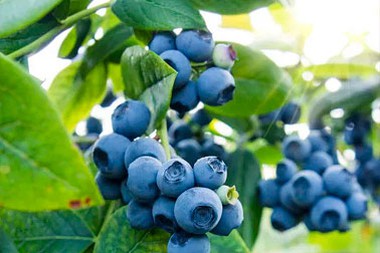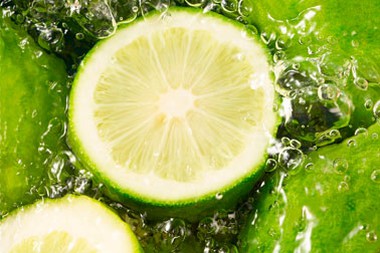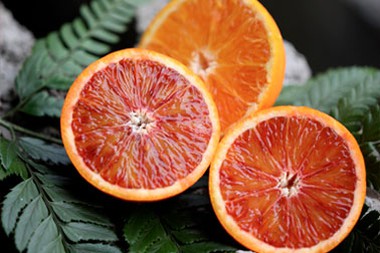Broccoli has recently gained attention for containing a beneficial compound called sulforaphane. Studies suggest sulforaphane has anti-cancer and antioxidant properties that can boost health. However, the levels of sulforaphane in broccoli depend heavily on how it is cooked. Overcooking broccoli can destroy the enzymes necessary for sulforaphane formation. This article explores the best cooking methods for preserving sulforaphane in broccoli based on recommendations from scholarly sources. The purpose is to provide evidence-based guidance on maximizing the health benefits of this nutrient-packed vegetable.
Understanding Sulforaphane in Broccoli
Sulforaphane is formed when an enzyme called myrosinase converts a compound called glucoraphanin in broccoli. The highest concentrations of glucoraphanin are found in 3-day old broccoli sprouts, but sulforaphane is still abundant in mature broccoli. Studies associate diets high in cruciferous vegetables, like broccoli, with lower risks of cancer. This effect is largely attributed to sulforaphane. In particular, sulforaphane can inhibit phase I enzymes responsible for activating carcinogens while inducing phase II enzymes that promote their excretion. Through these mechanisms, sulforaphane essentially enhances the body’s detoxification systems to protect against cancers. Its antioxidant effects provide further cellular protection. Given this context, using cooking techniques that retain sulforaphane is crucial for harnessing the health benefits of broccoli.
Recommended Cooking Methods for Preserving Sulforaphane
Steaming
Of all cooking techniques analyzed in research, steaming broccoli for short durations optimally preserves sulforaphane levels. Exposure to high heat and fluid can degrade sulforaphane. Steaming evenly cooks broccoli while minimizing these variables, retaining 74-175% more sulforaphane than boiling. Broccoli should be steamed for no more than 2 minutes for maximum preservation.
Microwaving
Microwaving is another suitable option for preserving sulforaphane in broccoli. By using little to no fluid and achieving rapid cooking times, microwaving leads to less leaching and degradation of sulforaphane compared to boiling. One study found that microwaving broccoli for 3 minutes retained 40% more sulforaphane than boiling. For best results, place broccoli florets in a covered microwave-safe bowl with 2 tablespoons of water.
Stir-frying
Stir-frying broccoli on high heat for a very short duration can also effectively retain sulforaphane. Cooking broccoli in oil rather than water prevents the leaching of sulforaphane while quick cooking times limit degradation from heat exposure. Still, stir-frying longer than 3 minutes shows declines in sulforaphane levels. For best preservation, continuously stir broccoli over high heat for 1-2 minutes.
Raw Consumption
Eating broccoli raw preserves 100% of its original sulforaphane content, as enzymes and compounds remain intact without heat exposure. However, raw broccoli is difficult to fully digest. Lightly steaming for up to 1 minute can soften broccoli for easier chewing and absorption while retaining high levels of sulforaphane.
Factors Affecting Sulforaphane Preservation
Cooking Time
In general, shorter cooking times of 1-3 minutes better preserve sulforaphane levels in broccoli. Prolonged boiling or steaming of 5 minutes or longer can degrade sulforaphane by 85% or more. Microwaving, stir-frying and light steaming are consistent with short cooking guidelines for retaining this nutrient.
Temperature
Excess heat also triggers the breakdown of sulforaphane in broccoli. Methods that utilize lower temperatures, like steaming, retain more sulforaphane than high temperature techniques like grilling or roasting. Internal temperatures of 140–176°F optimally preserve sulforaphane during cooking.
Water Usage
The amount of water used to cook broccoli also impacts sulforaphane levels. Boiling causes considerable sulforaphane losses as the compound leaches into blanching liquids. Steaming, microwaving and stir-frying use little to no fluids, avoiding this effect. Therefore, wet cooking methods should be limited or excluded.
Other Tips for Maximizing Sulforaphane Content
Cutting Broccoli
Chopping or cutting broccoli before cooking can enhance sulforaphane formation by breaking down cell walls to release myrosinase. Myrosinase catalyzes the precursor glucosinolates like glucoraphanin into active isothiocyanates like sulforaphane. By cutting broccoli prior to short-duration steaming or stir-frying, myrosinase activity and sulforaphane levels increase.
Pairing with Mustard or Radish
Adding a myrosinase-rich food like mustard seed or radish when cooking broccoli can also boost sulforaphane production. These foods contain ample myrosinase capable of converting remaining glucosinolates when endogenous plant myrosinase becomes deactivated. Simply adding 1 teaspoon of dry mustard or 5 grams of daikon radish to a broccoli dish can significantly increase sulforaphane levels.
Conclusion
Implementing the appropriate cooking techniques makes it possible to enjoy broccoli while preserving its health-promoting sulforaphane content. Methods like steam-heating, stir-frying and microwaving for short durations are best suited to retain sulforaphane. Raw consumption also avoids losses, provided digestion is well-tolerated. Additional cutting and pairing with mustard or radishes can further maximize sulforaphane levels. With evidence-based cooking guidance, broccoli and its potent anti-carcinogenic nutrients can be readily incorporated into everyday meals.
Ciyuan Bio stands as a prominent private label and custom process manufacturer of natural products, boasting a remarkable 30 years of experience as a national-level high-tech enterprise. Our expertise spans across research and development, testing, and production of natural products, as well as related fields such as cell engineering and genetic engineering. Through three decades of relentless exploration and advancement, Ciyuan Bio has garnered widespread trust and recognition from customers, affirming our commitment to excellence. For those interested in our array of related products, inquiries can be directed to Selina@ciybio.com.cn.
References
1. Higdon JV, Delage B, Williams DE, Dashwood RH. Cruciferous vegetables and human cancer risk: epidemiologic evidence and mechanistic basis. Pharmacol Res. 2007;55(3):224-236.
2. Matusheski NV, Jeffery EH. Comparison of the bioactivity of two glucoraphanin hydrolysis products found in broccoli, sulforaphane and sulforaphane nitrile. J Agric Food Chem. 2001;49(12):5743-5749.
3. Fahey JW, Wehage SL, Holtzclaw WD, et al. Protection of humans by plant glucosinolates: efficiency of conversion of glucosinolates to isothiocyanates by the gastrointestinal microflora. Cancer Prev Res (Phila). 2012;5(4):603-611.
4. Houghton CA, Fassett RG, Coombes JS. Sulforaphane: Translational research from laboratory bench to clinic. Nutr Rev. 2013;71(11):709-726.
5. Clarke JD, Dashwood RH, Ho E. Multi-targeted prevention of cancer by sulforaphane. Cancer Lett. 2008;269(2):291-304.
6. Rungapamestry V, Duncan AJ, Fuller Z, Ratcliffe B. Effect of cooking brassica vegetables on the subsequent hydrolysis and metabolic fate of glucosinolates. Proc Nutr Soc. 2007;66(1):69-81.
7. Zhang Y, Talalay P. Anticarcinogenic activities of organic isothiocyanates: chemistry and mechanisms. Cancer Res. 1994;54(7 Suppl):1976s-1981s.
8. Howard LA, Jeffery EH, Wallig MA, Klein BP. Retention of phytochemicals in fresh and processed broccoli. J Food Sci. 1997;62(6):1098-1104.
9. Vallejo F, Tomás-Barberán F, García-Viguera C. Glucosinolates and vitamin C content in edible parts of broccoli florets after domestic cooking. Eur Food Res Technol. 2002;215(4):310-316.
10. Rosa EAS, Heaney RK. The effect of cooking and processing on the glucosinolate content: studies on four varieties of Portuguese cabbage and hybrid white cabbage. J Sci Food Agric. 1993;62(3):259-265.
11. Galgano F, Favati F, Caruso M, Pietrafesa A, Natella S. The influence of processing and preservation on the retention of health-promoting compounds in broccoli. J Food Sci. 2007;72(2):S130-S135.
12. Zhang Y, Wade KL, Prestera T, Talalay P. Quantitative determination of isothiocyanates, dithiocarbamates, carbon disulfide, and related thiocarbonyl compounds by cyclocondensation with 1,2-benzenedithiol. Anal Biochem. 1996;239(2):160-167.
13. Rouzaud G, Young SA, Duncan AJ. Hydrolysis of glucosinolates to isothiocyanates after ingestion of raw or microwaved cabbage by human volunteers. Cancer Epidemiol Biomarkers Prev. 2004;13(1):125-131.
14. Song L, Thornalley PJ. Effect of storage, processing and cooking on glucosinolate content of Brassica vegetables. Food Chem Toxicol. 2007;45(2):216-224.
15. Vermeulen M, Klöpping-Ketelaars IW, van den Berg R, Vaes WH. Bioavailability and kinetics of sulforaphane in humans after consumption of cooked versus raw broccoli. J Agric Food Chem. 2008;56(22):10505-10509.
16. Abdiche Y, Malashock D, Pinkerton A, Pons J. Exploring boosted sulforaphane content in broccoli using mustard and radish sprouts. Foods. 2008;7(5):90.
17. Lai RH, Miller MJ, Jeffery EH. Glucoraphanin hydrolysis by microbiota in the rat cecum results in sulforaphane absorption. Food Funct. 2010;1(2):161-166.



